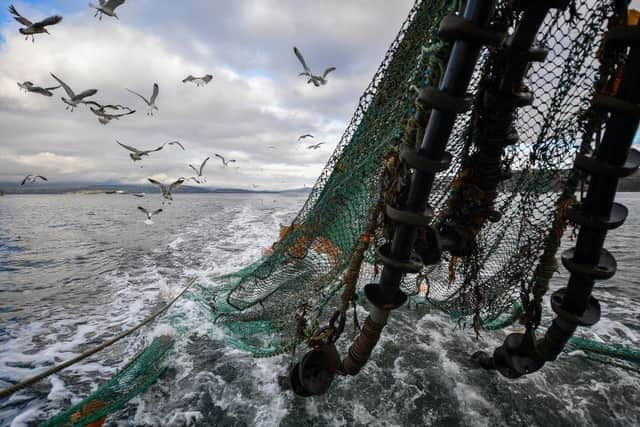Scientists investigating crustacean deaths in the North East claim there was 'nothing unusual'
The Government’s Centre for Environment, Fisheries and Aquaculture Science (Cefas) took samples from the shellfish known as Dublin Bay prawns to test for diseases and pathogens after local fisherman reported a sudden drop in landings.
Environment Secretary Thérèse Coffey revealed the tests were being carried out in March, when the Government was being urged to reopen a separate investigation into the deaths of thousands of crabs and lobsters that began washing ashore between Hartlepool and Whitby in the autumn of 2021.
Advertisement
Hide AdAdvertisement
Hide AdMarine biologist Dr Gary Caldwell, from the University of Newcastle, said he met with Cefas scientists who said they “didn't find any evidence” of a disease that could have killed the Dublin Bay prawns, which are also known as scampi, langoustine and Norway lobsters.


He also said the crustaceans, which burrow in sediment on the seabed around six miles offshore, were found to be "highly stressed”.
A Government spokesman said: “Cefas carried out an investigation, obtaining and examining 150 prawns off the coast of Hartlepool. Our investigation found no unusual findings when previous samples were compared with this case.
“A possible stress response was discovered in the heart tissues of some prawns in both samples. This is likely related to the stress of capture and is not considered unusual.”
Advertisement
Hide AdAdvertisement
Hide AdIt comes as concerned locals claim dead sea creatures have been washing ashore on a regular basis since the autumn of 2021, when thousands of crabs and lobsters died in mysterious circumstances.


According to Inshore Fisheries and Conservation Authority (IFCA), there were “clear reductions” in the numbers of crabs caught by fisherman who travel up to 10 miles offshore between Hartlepool and Bridlington last year. In Redcar, catches were down 96 per cent.
It also stated the number of lobsters caught by crews from Staithes, Redcar and Hartlepool were “considerably reduced compared to previous years”.
Fishermen and scientists from several universities claim the crustacean deaths in 2021 were linked to an industrial chemical called pyridine, that was released by dredging done in the River Tees as part of the Teesside Freeport project.
Advertisement
Hide AdAdvertisement
Hide AdA review, conducted by a panel of Government-appointed scientists, said it is “very unlikely” that dredging and toxic chemicals are to blame but it could not identify a “single clear cause”.
It also stated that no pyridine was detected in the water and the amount of pyridine found in dredged material was not high enough to kill crabs.
The panel found that an unknown disease or parasite is the most likely cause, but “no significant pathogens were identified” because full molecular screening was not conducted during Defra’s initial investigation.
According to the panel, there are three factors which suggest a disease or parasite is the cause: only crustaceans died, they were found across a large area, and some were twitching when found.